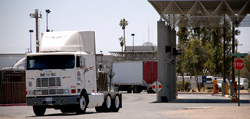Industry-Wide News
Back to Industry-Wide News
Determining Customs Value Of Fresh Produce . (An Informed Compliance Publication)
Dear Clients,
CBP issued an Informed Compliance Publication on Determining Customs Value of Fresh Produce on March 16, 2023, to clarify how fresh produce should comply with the required Basis of Appraisement in accordance with § 152.101. The following summarizes this publication and we suggest that you review your import documentation to confirm that you are in compliance.
All merchandise imported into the U.S. is subject to appraisement, in order of precedence, by the following methods:
(1) The transaction value provided for in § 152.103;
(2) The transaction value of identical merchandise provided for in § 152.104;
(3) The transaction value of similar merchandise provided for in § 152.104;
(4) The deductive value provided for in § 152.105;
(5) The computed value provided for in § 152.106; or
(6) The value provided for in § 152.107, (fallback method).
Please see the following summary of this CBP publication. The original notice is also attached for further information.
All merchandise imported into the U.S. is subject to appraisement, in order of precedence, by the following methods:
Transaction Value: In order for transaction value to be used as a method of appraisement a “sale” between the parties is required. The term “sold” means that there was a transfer of title from one party to another for consideration. The relationship between related buyers and sellers is also considered and it must not influence the price actually paid for the imported produce. In addition, the price paid or payable for the produce must exist at the time of exportation to the United States.
Transaction value may not be the basis for appraisement for fresh produce because the merchandise is delivered to the U.S. before a sale is completed. Importations that occur prior to sale are commonly made on consignment. Because there is no sale for exportation, transaction value is not applicable.
Transaction value of identical or similar merchandise is the next basis of appraisement. The transaction value of identical or similar merchandise is based on sales, at the same commercial level of merchandise exported to the U.S. “at or about” the same time as the good being appraised. If no such sales are found, sales of identical merchandise or similar merchandise at either a different commercial level or in different quantities, shall be used, but adjusted to take account of any such difference.
U.S. Customs determined that the word “at” meant exported the same day, and “about” meant “one week, i.e., seven calendar days, before or after the date of exportation of the merchandise being appraised, that is, a total of fourteen days.”
Deductive value is the next basis of appraisement unless the importer has requested the reversal of deductive value and computed value. Deductive value is the price obtained for fresh produce when sold in the U.S., less the importer’s commission or usual profit and general expenses, international and domestic freight and insurance, brokerage fees, and duties, taxes and user fees. This is based upon the prices for the produce derived by the importer’s sales after importation to unrelated persons.
Computed value is determined by the sum of: 1) materials, fabrication, and other processing used in producing the imported merchandise; 2) profit and general expenses; 3) any assist, not already included; and 4) packing costs. Where data is available, as may be the case where the grower is related to the buyer, computed value may be used as the proper method of appraisement. However, generally, the relationship between the unrelated importer and exporter is such that access to the required data is not available and so computed value is usually not available as a method of appraisement.
Fallback method may be used for valuation of imported produce. For example, the USDA Agricultural Marketing Service (AMS) issued daily and weekly price information lists can be used as the basis of appraisal for consigned produce under the Fallback method.
CBP declined to accept a value for perishable articles that was determined based on an average of the prices of from the previous four weeks of imported produce sold in the U.S., less a percentage for gross margin and international transportation. In the past, U.S. Customs found it was reasonable to appraise fresh produce based on Wholesale Produce Report prices. CBP may consider the importer’s accounting records in appraising consigned fresh produce on the basis of the Fallback method.
Reconciliation: CBP strongly encourages importers of fresh produce who may be relying on any method of appraisement other than Transaction Value to use the Reconciliation Prototype Program in the Automated Commercial Environment (ACE). In flagging value at time of entry and updating it later when reconciliation is filed, importers are reminded that the value declared at time of entry cannot be arbitrary, but rather must itself meet the reasonable care standard.
If the transaction value method is not applicable, the importer must exercise reasonable care in appraising the merchandise under the alternative methods of appraisement. For example, if the produce importer has access to the grower’s costs of production, it should determine whether it could report computed value before moving on to fallback valuation. Sometimes, the importer is related to the grower, meaning that the elements of computed value will be available to the importer, though in most instances that is not the case. If, at the time of entry an importer appraises the merchandise based on the fallback method, the importer must document the supporting facts and make that documentation available to CBP upon request.
Please contact us at the following email if you have any questions: Compliance@rljones.com
Sincerely,
RL Jones
Latest News
Border Wait Times




.jpg)
.jpg)